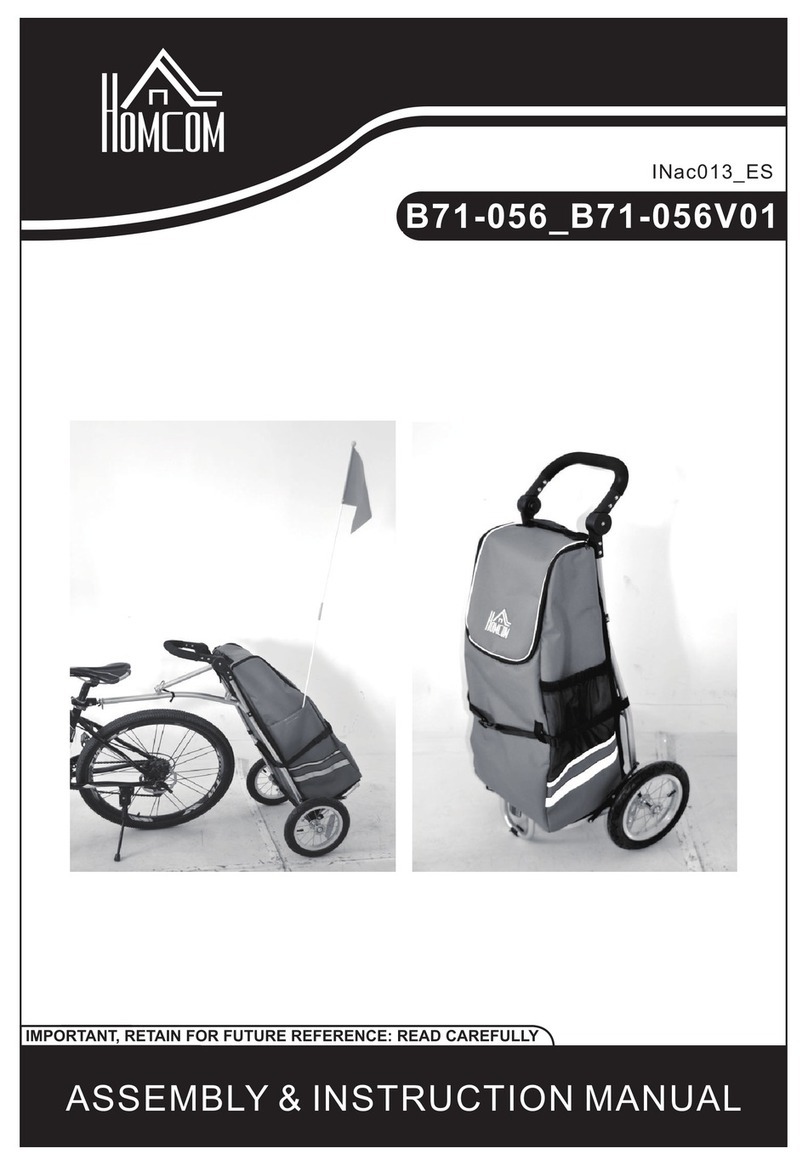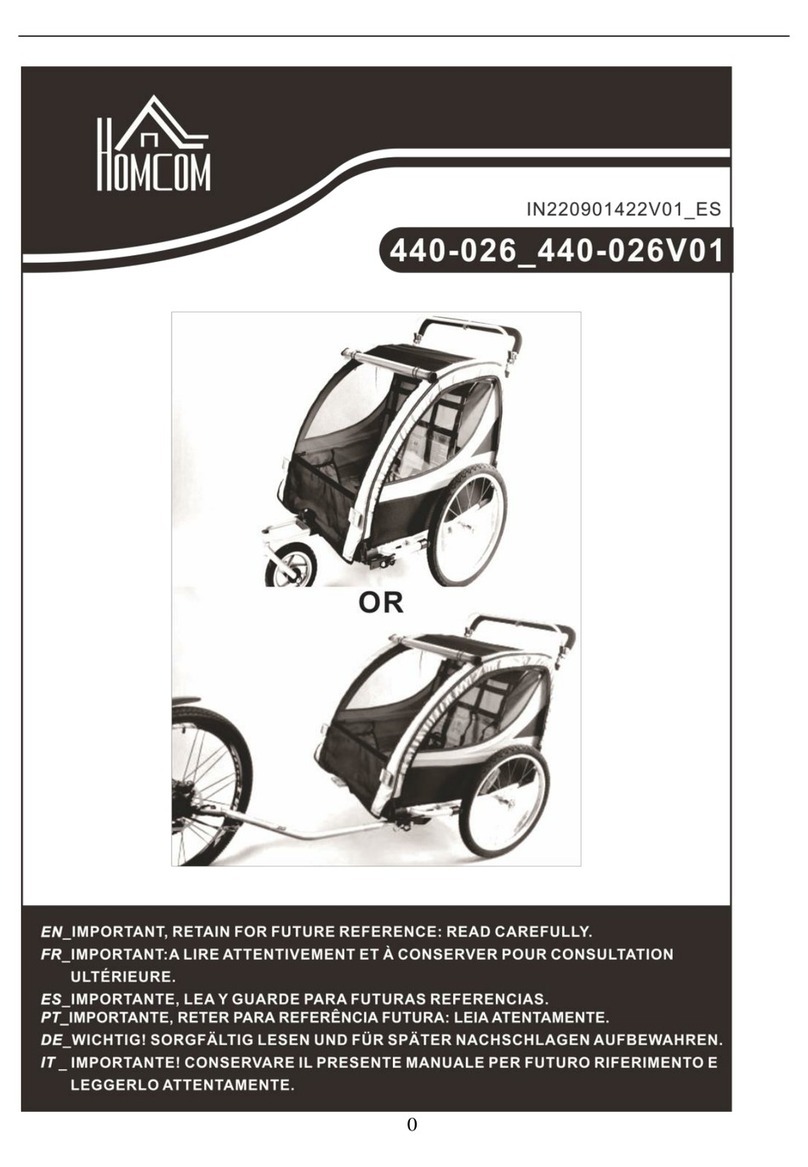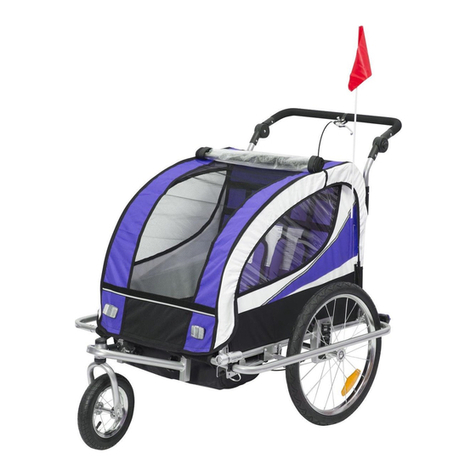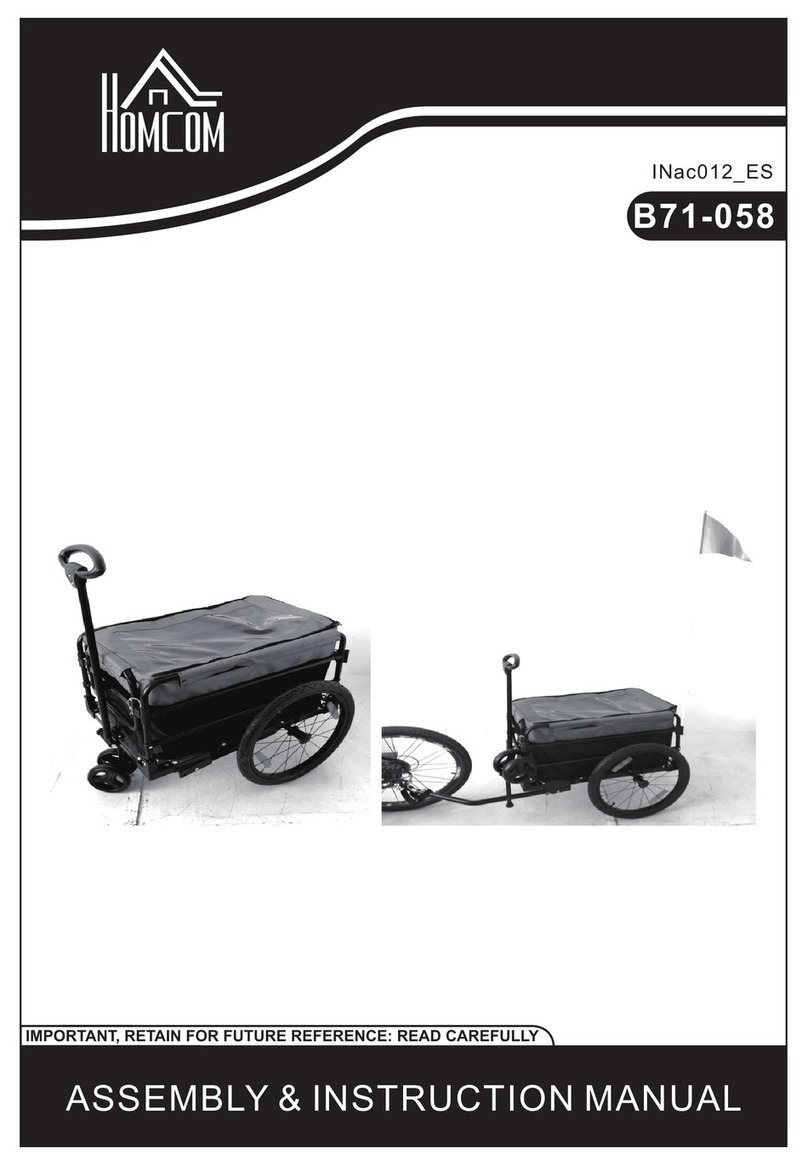
2
Warning and Safety Information
Reflectors
WARNING: For your safety, do not use the Trailer if the reflectors are incorrectly
installed, damaged, or missing. Make sure the reflectors are vertical and pointing
straight back. Do not allow the visibility of the reflectors to be blocked by clothing or
other articles. Dirty reflectors do not work well. Clean the reflectors, as necessary,
with soap and a damp cloth.
Trailer warnings
WARNING: Failure to comply with the manufacture’s instructions can lead to
serious injury or death of the passenger/rider.
ŸAdult assembly required.
ŸThis trailer is only for cargo use, not for use as a child carrier.
ŸOnly use bicycles with 26” or 28” wheels capable of pulling a 40 kg trailer.
Contact your manual or bicycle retailer for more information
ŸCaution on driving behavior of cycle/cycle trailer set, especially when driving
downhill or around corners.
ŸNever exceed a safe speed. Recommended maximum speed is 8 MPH(13KMH)
and slowing to no more than 3 MPH(5KMH) when turning.
ŸNot for cargo(such as but not limited to bricks, debris, logs,etc.).
ŸAs cargo trailer: Maximum weight is 88lb (40KG). Maximum load weight is 66lb
(30KG). .
ŸRiders must wear an approved bicycle helmet when riding in this product.
ŸThe trailer is not suitable for running or skating. Do not use trailer in snow or icy
conditions.
ŸDo not install a car seat or any other seating device not approved by the
manufacturer inside the trailer.
ŸDo not use on rocky or uneven road surfaces.
ŸDo not park near inclines or uneven roads that may cause the trailer to tip.
ŸMake no modification to the trailer.
ŸBefore each ride, ensure the attached trailer and trailer components do not
interfere with braking, pedaling, or steering of the bicycle.
ŸNever use a trailer at night or times of limited visibility.
ŸObey all local laws and regulations for bicycles and trailers.
ŸCheck all fasteners before each ride.
ŸEnsure lock pins are fully inserted/engaged before each ride.
ŸAlways use the safety flag when pulling this trailer.
ŸThe bicycle to which the trailer is attached should undergo a safety check by a
qualified bicycle mechanic before attaching the trailer to it.
ŸCheck tires before rider. Inflate tires to recommended pressure shown on tire
sidewall.p
EN


































